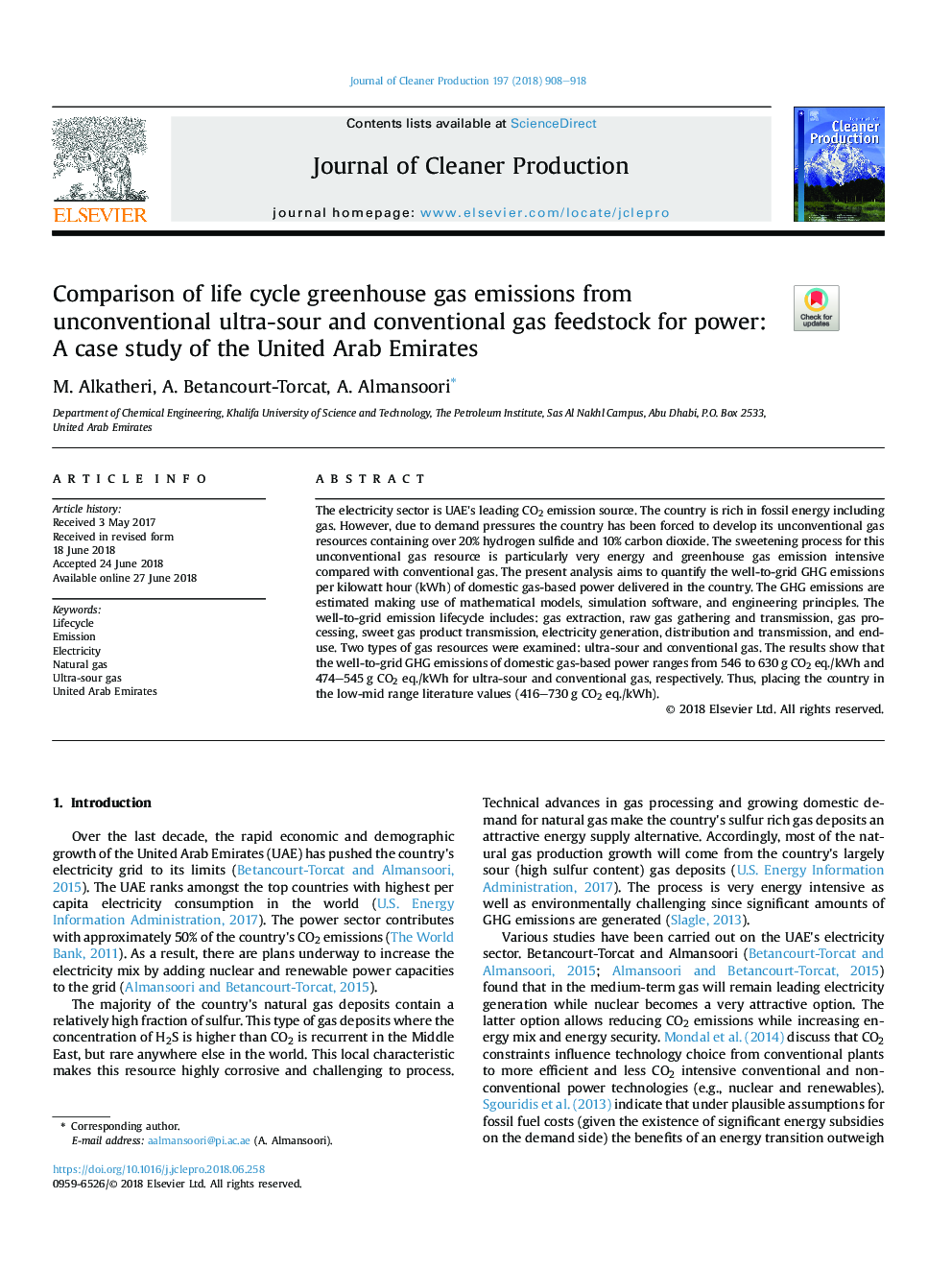| Article ID | Journal | Published Year | Pages | File Type |
|---|---|---|---|---|
| 8094148 | Journal of Cleaner Production | 2018 | 11 Pages |
Abstract
The electricity sector is UAE's leading CO2 emission source. The country is rich in fossil energy including gas. However, due to demand pressures the country has been forced to develop its unconventional gas resources containing over 20% hydrogen sulfide and 10% carbon dioxide. The sweetening process for this unconventional gas resource is particularly very energy and greenhouse gas emission intensive compared with conventional gas. The present analysis aims to quantify the well-to-grid GHG emissions per kilowatt hour (kWh) of domestic gas-based power delivered in the country. The GHG emissions are estimated making use of mathematical models, simulation software, and engineering principles. The well-to-grid emission lifecycle includes: gas extraction, raw gas gathering and transmission, gas processing, sweet gas product transmission, electricity generation, distribution and transmission, and end-use. Two types of gas resources were examined: ultra-sour and conventional gas. The results show that the well-to-grid GHG emissions of domestic gas-based power ranges from 546 to 630â¯g CO2 eq./kWh and 474-545â¯g CO2 eq./kWh for ultra-sour and conventional gas, respectively. Thus, placing the country in the low-mid range literature values (416-730â¯g CO2 eq./kWh).
Related Topics
Physical Sciences and Engineering
Energy
Renewable Energy, Sustainability and the Environment
Authors
M. Alkatheri, A. Betancourt-Torcat, A. Almansoori,
